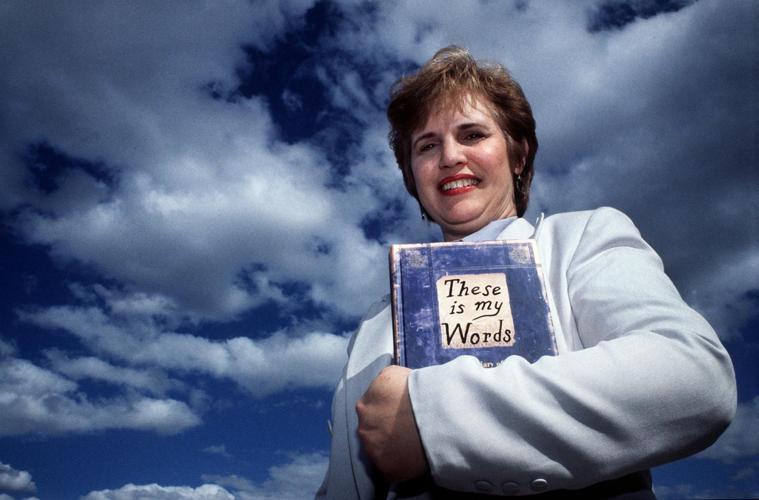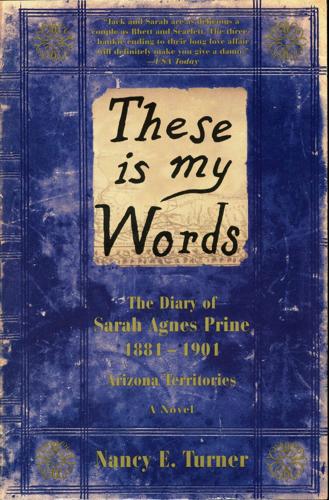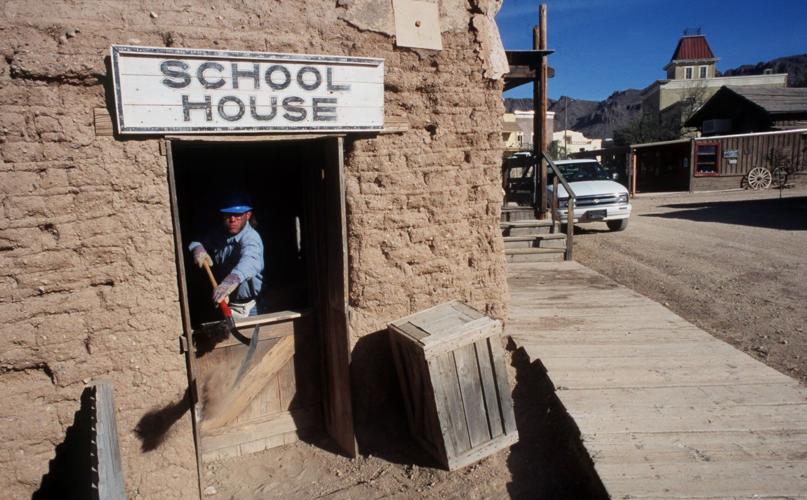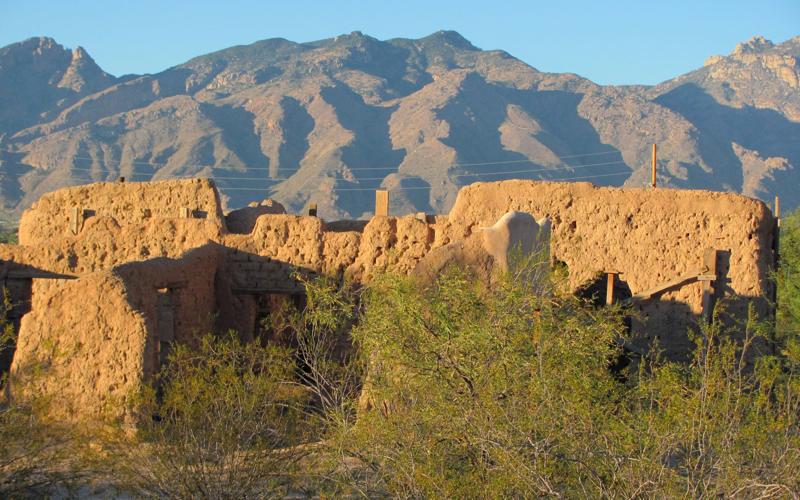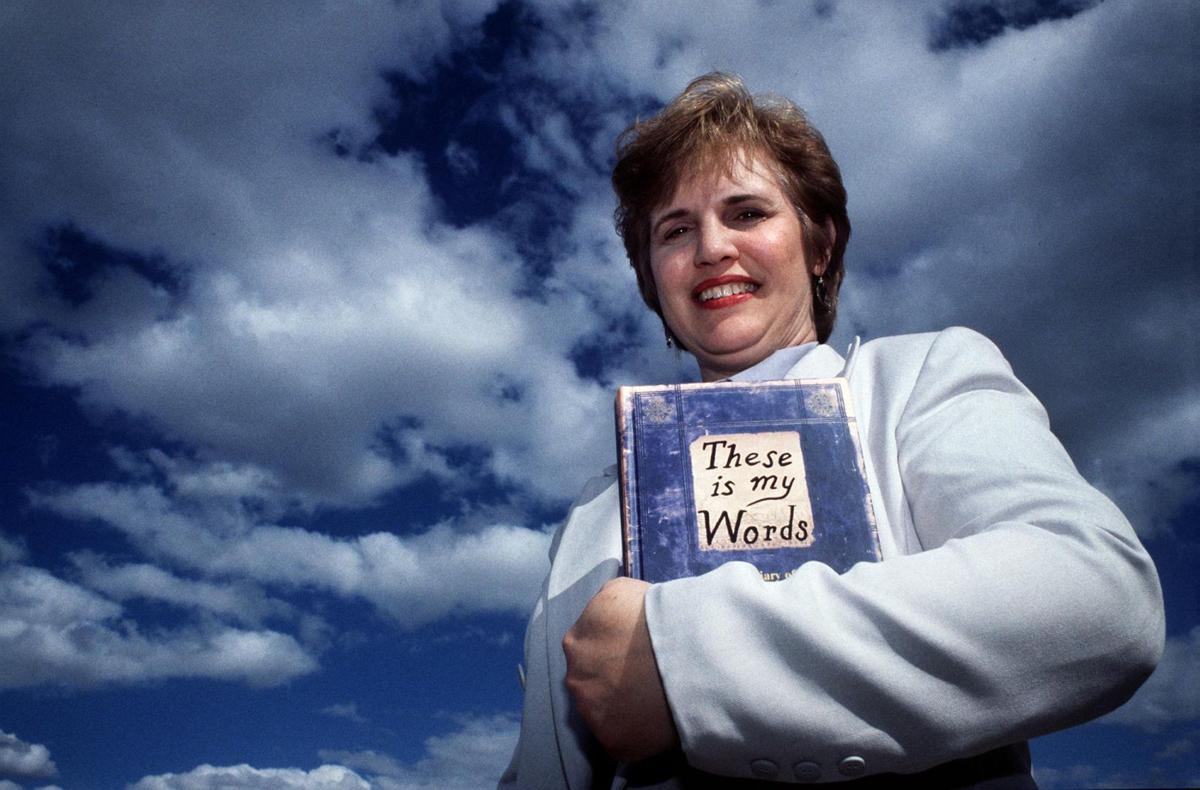For our fourth book club read, we're time traveling to an era when real soldiers called Fort Lowell home and wagon trains stretched across the American West.
"These Is My Words: The Diary of Sarah Agnes Prine, 1881-1901" by Nancy E. Turner chronicles the life of a woman on the Arizona frontier south of Tucson.
Part romance, part coming-of-age tale, the book — written in diary form — pays tribute to Turner's maternal great-grandmother Sarah Agnes Prine, the namesake and inspiration for our leading lady.
Although most of the plot is fictional, the character is not. Turner's own grandmother, Sarah's daughter, read the book and gave it a thumbs up.
"What I know about (Sarah's) real life would probably fit on two pages, so my grandmother read the book before she passed away, and she said it is a really good picture of Sarah combined with Sarah's mother, Roxie," Turner, 63, says. "Roxie apparently fought Indians alongside her husband all her life. She was a tough frontier woman."
And so, too, is the book's Sarah, a spunky settler who forges a life for herself and her family under the sweltering desert sun.

The story is based on the Sarah Agnes Prine, Turner's great-grandmother.
One Goodreads reviewer compared the book to the "Little House on the Prairie" series but for grown-ups. Plus we get the added bonus of discovering nuggets of history about our hometown before Arizona became a state in 1912.
We will be reading "These Is My Words" through July. You can join by searching #ThisIsTucson Book Club on Facebook, where we discuss a new part of the book every Thursday, starting July 13. This book is broken into diary entries, not chapters, so we've organized the schedule by diary entry dates.
Don't stress about falling behind in the reading or finding the book a bit late (you may have to order it online). It's summer. We're relaxed about this whole thing.

This is the calendar we'll follow this month. But don't let deadline stress keep you from picking up a good book. We don't mind if you fall a bit behind.
Turner moved to Tucson in 1992 with her husband and two children. She spent much of her working life as a secretary and never aspired to be an author. She started at Pima Community College in her 40s with aspirations to teach high school English. She eventually earned her bachelor's degree from the University of Arizona.
She signed up for a fiction writing class because it fit into her schedule and looked like an easy A.
An assignment to write a short story about a deceased person of interest corresponded with Turner's father's genealogy research, which unearthed a memoir written by Sarah's brother Henry Prine in the 1920s. Unexpectedly, the memoir placed the family in Southern Arizona. The first few chapters of the book are based on that document.
Because Turner grew up hearing tales of Sarah, she decided to imagine a life for her great-grandmother.
After about 18 months, that homework became her first novel "These Is My Words," published in 1998 by HarperCollins Publishers. That's only after Turner sent her work to at least 40 agents. Turner now has five historical fiction novels behind her. Two of those are sequels to the award-winning "These Is My Words."
We interviewed Turner, who now lives in Pinetop, before finishing the book, so our conversation was totally spoiler free. Here are some of the highlights, edited for clarity.

Read books with us!
Give us the backstory to "These Is My Words."
"A lot of people think because it's written in diary form that she left diaries that I found and published, but that couldn't be further from the truth. What it is is that as I was growing up, we lived in Southern California and every summer would drive to West Texas where we would spend between two and six weeks on my grandparents farm, and my grandmother was a great storyteller, and she would talk to me while cooking and tell me stories about her mother who was named Sarah Agnes and how Sarah could cook and shoot and ride a horse and throw a lasso and ranch with the best of them ...
"Her mother taught her different things girls needed to know and one of her things was that a good girl never goes anywhere without a loaded gun and a big knife ... It was almost like I was given free reign to imagine living in the Old West. I never knew Sarah and am told I met her only once and was probably less than 2 years old. I have a very vague recollection of just sitting in an old lady's lap on a rocking chair. I think that might have been her."
How did you do the historical research?
"That was before the internet was enormous. You didn't do research on it. There wasn't information. So I owned six library cards and also went to the Arizona Historical Society in Tucson. I literally just hunted books and places and studied maps ...
"It was really heavily researched down to things that didn't even make it into the book, like how many buttons were on a high-button shoe. ... As an author doing historical fiction, you need to know so much more than hits the paper. It has to be your own fiber so you can tell a story and make it feel like the readers are living the story ...
"Keeping it accurate was really important, down to finding out the dates of every historical battle that involved the 6th Calvary, General Crook, Geronimo and all of the real Native Americans. Any confrontation with the U.S. Army actually happened on the dates they happened in the book."
What were some of your favorite things you learned about Tucson?
"They actually had a huge place with an open air lake downtown, a man-made lake, called Carillo Gardens, and that's where bands would play and you could rent a canoe and a man would row a lady around and she would hold a parasol...
"I always imagined that the school house in Tucson would look like the schoolhouse in 'Little House on the Prairie.' A white, square building. I discovered at Old Tucson a replica of the adobe school house that was built into the presidio walls in Tucson. It's ... made out of mud adobe, and it had gun slot windows so the teacher could shoot through the windows if need be. ... It was certainly not the school house from 'Little House on the Prairie.'

Old Tucson construction worker John Gowin throws out dirt from an 1868 Adobe school house that sits along Old Tucson's main street, as the studio gets ready to reopen after a fire destroyed much of the park.
"Another wonderful thing I learned about Arizona in that era was that it was not a state of course until 1912 and because of that we were not under the kind of rules and laws that governed most other states ... Women could own ranches and run businesses and make choices. They did not give everything they owned to a man when they got married and they didn't turn over the reigns of their lives to a husband."
In the book, the grammar and vocabulary match Sarah's level of education. Why?
"It comes from the fact that I was 40 and going to college for the first time, so it was a very different world than if I had gone, for instance, when I was 17 or 18. ... What I discovered was that everything I learned, every new thing I read, every subject I got interested in, my vocabulary grew and developed and changed and I began to be able to speak and write more like a person who had been to college. What I wanted to do was show how her language developed with her growth and education and exposure to books, and so throughout the novel, every chapter is carefully scripted so that her language ability moves along from a second-grade level to more like fifth grade by the end of the book. ...
"I read it all with an eye toward my grandmother telling me her stories. And I could hear her voice narrating the life of her mother in this colloquial Texas drawl. I wanted Sarah to learn to read and appreciate education because I know in real life, she did. She never got to go to school but wanted to so badly. My mom was the first person in her family to go to college and that was my one goal: To develop the language as I develop the character."
Tell us about your writing process.
"I sat on a broken chair at a card table in an un-air-conditioned storage room with a computer that I painted night lights to earn the money to buy. It was pretty rustic. I had a stack of books and boxes of old kid toys all around, and it was pretty much the mud room / storage room to our house. But I was in love with the process and I didn't care. I would drink coffee and sweat bullets and turn on a fan and have it blowing it me. I concentrated so hard on what I was doing that the rest of it didn't really matter. ... Finally, my husband said, 'If you're going to keep up this nonsense, we'll have a guy cut a hole in the A/C duct and put A/C in there,' so he did and I moved my card table under the A/C duct, and then scorpions would fall out of the duct onto the keyboard, so I decided I don't think I need to be that cool after all, and I moved back to the other end of the room where I had been. ...
"There is a scene in 'These Is My Words' where Sarah is an army wife and living in officers' quarters, and the ceiling is made out of cactus spines and mud, and when it would rain, centipedes and scorpions came from the ceiling. That came from an officer wife's diary from Fort Lowell. And after that happened to me, I thought, 'I have to put that in the book.'

This adobe building used to serve as an officers' quarters for Fort Lowell.
"It was motivated not by the thought that it would ever get published. I wasn't showing up for a job. I had a part-time job and was going to school and had a family at home and laundry and dogs and cooking and cleaning and all that to do ... Quite often, I did most of my writing in the wee hours of the night when everyone would go to sleep ... I'm talking hours every night, and that didn't start until 10 p.m. And then I would get up in the morning, and I was so tired, but I loved it."


